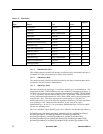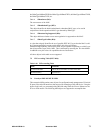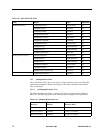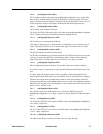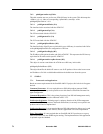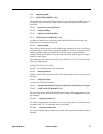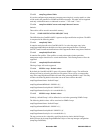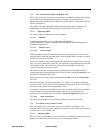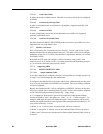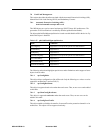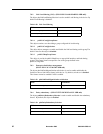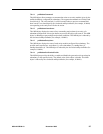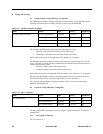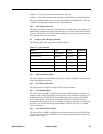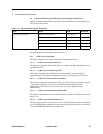
80 November 2003 8000-A2-GB30-10
7.7.6.1.1 vacmContextTable.
It defines the locally available contexts. This table is read-only and can not be configured
by SNMP.
7.7.6.1.2 vacmSecurityToGroupTable.
It maps a securityModel and securityName to a groupName. Supported read-only with
default values.
7.7.6.1.3 vacmAccessTable.
It maps a groupName, context and securityInformation into a MIB view. Supported
read-only with default values.
7.7.6.1.4 vacmViewTreeFamilyTable.
It defines whether an OBJECT IDENTIFIER can be accessed for a given MIB view or not.
Supported read-only with default values.
7.7.7 SNMPv3 Coexistence.
RFC 2576 discusses the “Coexistence between Version 1, Version 2 and Version 3 of the
Internet-standard Network Management Framework”. This table will be used to configure
community strings for v1/v2c clients. This table has no significance and thus, it is not used
for SNMPv3 clients.
By default, the SCP agent will configure a default community string ’public’ with
read/write access level; which uses the v1 modeling processing and dispatching [snmpV1
(1)] as well as the community-based security model.
7.7.7.1 Supporting MIBs
7.7.7.1.1 SNMP-COMMUNITY-MIB.
7.7.7.1.1.1 snmpCommunityTable.
It provides a mapping of a community string to a securityName (for example, snmpV1 (1)
or snmpV2 (2)), contextEngineID, and contextName.
If configured, this table also allows the source address to be validated which provides some
level of security for SNMPv1 and SNMPv2c environments. This source address validation
will not be supported.
Because the GranDSLAM R3.2 will be configured as an SNMPv1, and entry in this table
will exist by default with a communityName of “public” and the source address validation
will be turned off (snmpCommunityTransportTag = empty-string).
A TL1 command or Web interface option will be required to enable/disable different
versions of SNMP or ’none’ (the options are: ’None’, ’v1/v2c’ ’v3 with encryption’. An
enterprise MIB might be required to handle this option. These commands will internally
translate into additionsdeletions to the respective tables (snmpCommunityTable for v1/v2c
users, usmUserTable for v3 users).
1) When ’v1/v2c’ is selected, users in usmUserTable will be set to inactive.
2) When ’v3-encryption’ is selected, users in entCommunityTable will be set to inactive.
3) When ’none’ is selected, users in both usmUserTable and entCommunityTable will be set
to inactive.



